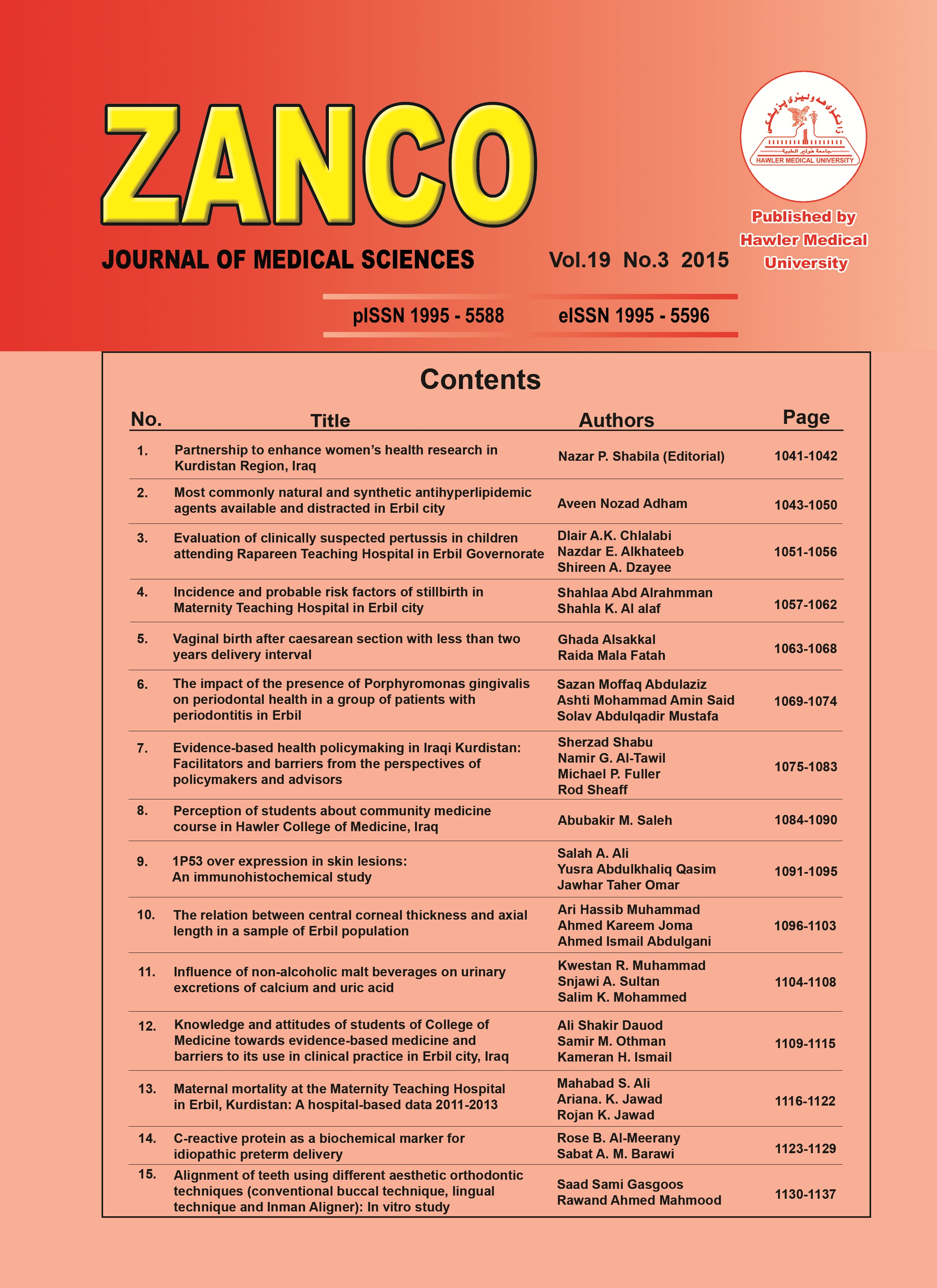Comparison between infiltration and inferior alveolar nerve block anesthesia in extraction of non-vital mandibular posterior teeth (prospective clinical study)
Copyright (c) 2014 Rozh M . Hussein, Dilman N. Muhammad, Othman A. Omar (Author)

This work is licensed under a Creative Commons Attribution-NonCommercial-ShareAlike 4.0 International License.
- Articles
- Submited: October 4, 2018
-
Published: December 1, 2014
Abstract
Background and objective: Infiltration anesthesia for the posterior region of the mandible has been routinely avoided because of its questionable effectiveness related to the dense cortical bone of the mandible. The aim of this study was to evaluate the effectiveness of infiltration anesthetic technique on mandibular posterior non-vital teeth.
Methods: Forty four patients aged between 13and 73 years who attended the Department of Oral and Maxillofacial Surgery in the College of Dentistry, Hawler Medical University for extraction of posterior non vital tooth were included in this study. For the infiltration anesthetic technique, patient’s approval was taken. The patients were equally divided into two groups. Group (1) received 0.6 ml out of 1.8 ml of 2% lidocaine with 1:80000 adrenaline injection bucally and the same amount infiltration lingually opposite the intended tooth. Group (2) received 1.5 ml out of 1.8 ml of 2% lidocaine with 1:80000 and the remaining 0.3 ml was injected for long buccal nerve anesthesia.
Results: In group (1), 68.2% had no pain during extraction, showed statistically highly significant difference (P = 009). Gender showed no significant difference. In group (2), 100 % of the patients had no pain during extraction.
Conclusion: Infiltration anesthesia for non-vital mandibular molars is effective as a substitute for inferior alveolar block technique.
Metrics
References
- Oulis CJ, Vadiakas GP, VasilopoulouA. The effectiveness of mandibular infiltration compared to mandibular block anesthesia in treating primary molars in children. Pediatr Dent J 1996; 18:301-5.
- Heller AA, Shankland WE. Alternative to the inferior alveolar nerve block anesthesia when placing mandibular dental implants posterior to the mental foramen. J Oral Implantol 2001; 27:127-33.
- Talesh KT, Solahaye-Kahnamouii S .Application of Crestal Anesthesia for Treatment of Class I Caries in Posterior Mandibular Teeth. J Dent Res 2011; 5:17-22.
- Oulis CJ, Vadiaka GP, Vasilopoulou A. The effectiveness of mandibular infiltration compared to mandibular block anesthesia in treating primary molars in children. J Pediatr Dent 1996; 18:301-5.
- Champan PJ. Postoperative pain control for outpatient oral surgery. J Endod 2003; 28:89-91.
- Snell R. Clinical anatomy by regions, 9th ed.; 2012.p. 610
- Choi EH, Seo JY, Jung BY, Park W. Diplopia after inferior alveolar nerve block anesthesia: report of 2 cases and literature review. Oral Surg Oral Med Oral Pathol Oral Radiol Endod 2009; 107:21-4.
- Etoz1 OA, Erl N, Demirbas AE. Issupraperiosteal infiltration anesthesia safe enough to prevent inferior alveolar nerve during posterior mandibular implant surgery. Med Oral Patol Oral Cir Bucal 2011; 16:386-9.
- Madeira MC, Percinoto C, das Graças M, Silva M. Clinical significance of supplementary innervation of the lower incisor teeth: a dissection study of the mylohyoid nerve. OralSurg Oral Med Oral Pathol 1998; 46:608-14.
- Pogrel MA, Smith R, Ahani R. Innervation of the mandibular incisors by the mental nerve. J Oral MaxillofacSurg 1997; 55:961-3.
- Sutton RN. The practical significance of mandibular accessory foramina. Aust Dent J 1994; 19:167-73.





